What makes social media an essential tool for social enterprise is
Advice, resources, and insight on how to make social engagement work to grow your business and career.
Viewing entries in
Courses
What makes social media an essential tool for social enterprise is
Every organization has blind spots and, for most, social media is on that list. Yes, still. The ones who figure it out and run with it are the ones who work to fully understand it. There's still a lot of time to get there.
The best content a business can share is their own stories. If a client cares about what you sell, they will care about the stories you have to tell. But how the story is told and shared matters a great deal and there are a variety of ways that can be done with both large budgets and no budgets.
Investing in your brand without investing in who is going to influence it the most is kind of crazy. And since "social media" is so obviously about people, it's important to understand how important the personal brands of your people are on social channels.
 David Hayward, known around the world as the "naked pastor" is an expert on building nurturing, connected, loyal communities of people who care about what the community stands for - what every social business should strive for.
David Hayward, known around the world as the "naked pastor" is an expert on building nurturing, connected, loyal communities of people who care about what the community stands for - what every social business should strive for.
 His nakedpastor cartoons and content is viewed and shared by over 200,000 people each month and he just started a brand new democratic, online community called The Lasting Supper "for people who want to transition into a life of personal, intellectual and spiritual freedom and independence".
His nakedpastor cartoons and content is viewed and shared by over 200,000 people each month and he just started a brand new democratic, online community called The Lasting Supper "for people who want to transition into a life of personal, intellectual and spiritual freedom and independence".
David is NOT here to talk about spirituality (although you probably wouldn't have a hard time getting him offline in a sidebar discussion), He is leading the discussion to focus on what social businesses need to figure out more than anything else: how to build a community around your brand.
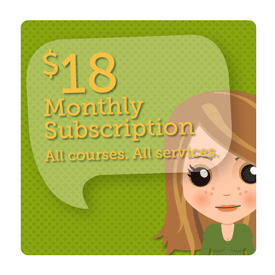 As the Learn by Sociallogical™ Mentor On-Call for October, David will respond to comments posted to the site, blog his own thoughts on growing communities and on a few lessons in our Learn courses for business, and make sure mentorship stays at the heart of how we learn throughout the month.
As the Learn by Sociallogical™ Mentor On-Call for October, David will respond to comments posted to the site, blog his own thoughts on growing communities and on a few lessons in our Learn courses for business, and make sure mentorship stays at the heart of how we learn throughout the month.
Leave a comment in the courses or in the open forums this month and David is sure to respond. He's a bright, thoughtful guy and we are very happy to have him as our very first Mentor On-Call!
Add David as a Friend so you can talk to him about building your own brand community. You can find him in Learn by Sociallogical™ at http://learn.sociallogical.com/members/nakedpastor
 Advertising has always been a bit of a game of roulette. The famous quote that captures the angst of the business owner was portrayed by John Wanamaker nearly 100 hundred years ago when he said, “half the money I spend on advertising is wasted. The trouble is I don’t know which half.”
Advertising has always been a bit of a game of roulette. The famous quote that captures the angst of the business owner was portrayed by John Wanamaker nearly 100 hundred years ago when he said, “half the money I spend on advertising is wasted. The trouble is I don’t know which half.”
I promised I would not name names.
But in the past two years I have had several clients who cut over $1000 per month or more from their advertising budgets - and saw no drop or difference in their business.
What? In one case nearly $3000 per month with no discernible difference in the bottom line? What is going on here?
If you had a big budget twenty years ago, advertising was also a bit of a math formula - or at least so I was told by my business owning friends who fighting the good fight at that time. They tell me that once you had the right channel (TV, radio, or print) you could roughly figure that if you spend X% of your gross revenue, you would see a Y% bump in the bottom line.
I am not sure the good old days were really better.
Today there are more options and more voices clamoring for your advertising and marketing budget than ever before. Do you keep you space in the Yellow Pages? Is it worth paying for exposure in the business directories? How about search engine marketing? Or social media? Everyone seems to be on Facebook these days...
Making sense of the shift to digital and social business is one of the biggest challenges for small business owners and managers these days. The shift seems to elicit one of two reactions: “Oh yeah!” or “Oh no!”
Here are a couple of quick ideas to consider if you’ve “discovered” an extra $30,000 in your advertising budget this year. Yes, I know you deserve that long postponed vacation, but this is about low-hanging fruit that will make the best ROI of what you are already doing:
If you haven’t found excess money in your advertising budget, or are struggling to figure out what might be the best use of your hard earned dollars - you can make sense of this new chaos. The businesses who do, are going to own their competition in the near future. The ones who don’t can stick their head in the sand, because even in the slowest of markets - social business is becoming the new phone, and your customers are expecting you to answer.
If you want to make sense of your advertising budget, and get a better ROI on the dollars you are already spending, join us for this focused workshop and save thousands over the course of the year...
 Two years ago I signed my team up to participate in a course to teach us how to build a social business. It lit a flame that has been burning ever since. Telling our company’s story using social channels has helped us build community around the world. The course was Sociallogical’s Understanding Social Business and, after completing the course, Sociallogical’s Jeff Roach and I discussed the possibilities of putting together a course about the power and brand empowerment of video storytelling in the new digital landscape.
Two years ago I signed my team up to participate in a course to teach us how to build a social business. It lit a flame that has been burning ever since. Telling our company’s story using social channels has helped us build community around the world. The course was Sociallogical’s Understanding Social Business and, after completing the course, Sociallogical’s Jeff Roach and I discussed the possibilities of putting together a course about the power and brand empowerment of video storytelling in the new digital landscape.
It took a year and a half to accomplish, but here we are! Hemmings House and Sociallogical are very excited to roll out our latest course, “Moving Pictures: Making and Sharing Social Videos”. This is an introductory course that will motivate you to pick up your own camera and begin producing content for your business immediately.
Video is considered one of the most effective communication tools in the social space. Businesses are now building their own production companies within their own walls to keep up with the demand for original and relevant content that supports the brand and the tribe.
My hope is that this course will ignite the same fire in you that the Understanding Social Business course did for my team and I. Once you realize that you have the power and the creative assets to tell your own story (and that your own story is truly epic), then this course will encourage you to get out there and shoot!
 Not everyone is social in the offline world and I meet so many people who are afraid to be social in the online world. If I can't find something to say in person, what do I say online?
Not everyone is social in the offline world and I meet so many people who are afraid to be social in the online world. If I can't find something to say in person, what do I say online?
That's an excellent point and troublesome now that social is how we reach an audience for our business. But while being social is powerful and builds the connective tissue that results in loyalty and reach for a social business, conversation isn't the only side of it.
Sharing great content is social. That might seem obvious but by segmenting out the acts of sharing content from engaging in conversation, those who don't like to converse so much can find a place in this space.
Most of us live a portion of our lives online and we all find great content every day that is relevant to our business and what we do. Share it! Your target audience wants to see what engages you and it will help to shape your brand. Articles, resources, instructional videos, infographics, photos - anything that can be helpful to your clients and imply what is important to you in what you do.
So there is a place for the quieter people amoung us. If you can't speak, just share.
Who do you know that has a lot to share but is reluctant to? How might you encourage them?
Note about the photo above: Sarah Tapley is a new Member of Learn by Sociallogical™ and is a design guru with Tuck Studio and Punch Inside. She spends each day with her nose in countless amazing design websites, her hands on the creation, assembly and display of super interesting design products, and listening to what inspires clients the most about the spaces they live and work in. Of course Sarah has a ton of great things to share! In fact, much of what Sarah has to share doesn't even need words. (Photo credit: Kelly Lawson)
People don’t socialize with brands, they socialize with people. So even if you have a brand account for your business, finding a way to feature your people through it is essential. Here are a few questions to ask yourself when sorting through this issue.
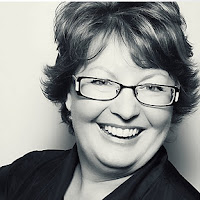 Register using code ELAINES to join "the Empress of Inspiration", Elaine Shannon, in her first course to help your team understand social business in a few short weeks as Sociallogical's newest mentor of our online classes.
Register using code ELAINES to join "the Empress of Inspiration", Elaine Shannon, in her first course to help your team understand social business in a few short weeks as Sociallogical's newest mentor of our online classes.
"Still working on Sociallogical course. REALLY good content! Should help me become more social media savvy! Thanks a bunch for a great course!" - Lorna Pond, Urban Landscaping
"Almost halfway through chapter three of Sociallogical course! Tres enlightening! 2012 will be a year of connectiveness for HHP" - Greg Hemmings, Hemmings House Productions
Elaine is scheduling her inaugural class to begin in 2 weeks with registration closing on Friday, March 16 as her last step for certification as a Sociallogical Mentor.
Chapter 1: How Did We Get Here? How Do I Start?
Chapter 2: How To Use the Social Media Tool Box
Chapter 3: How to Grow a Social Business
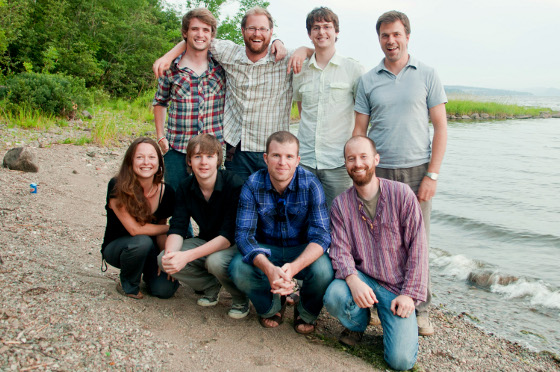 The people who work for your company need to be the core of your community, online and off, if you hope to build a community around your brand that draws people to you.
The people who work for your company need to be the core of your community, online and off, if you hope to build a community around your brand that draws people to you.
As a business, you are all together to build something you believe in. You work with people who you have something so in common with that you spend 40+ hours a week together doing it.
When people look for you online, what they need to find is your community, sharing and amplifying each other's content and talking with each other, like friends and colleagues do. Your social media community is the heavy lifter of your inbound marketing strategy. Trying to draw people to your brand without it is as unlikely to succeed as not advertising was back in business 1.0.
Here’s the basic Sociallogical prescription for building a brand community:
This active community you build with your first line of stakeholders is the best social asset you have available to you. If you don’t socialize with each other, why would anyone else want to?
NOTE: The Photo above is the Hemmings House team, who we had the privelege of working with this year. A fantastic small company that is an attractive core for a growing and engaging community for their brand.
 Relationships begin with a gift. It may be as small as a smile or a suggestion, but something is given so the other can reciprocate and the back and forth of relationship has begun.
Relationships begin with a gift. It may be as small as a smile or a suggestion, but something is given so the other can reciprocate and the back and forth of relationship has begun.
It's no different when we go online and it is unreasonable for anyone to expect relationship to emerge without this interpersonal volley. When we retweet someone's post, comment on their article, tag them in a photo, or recommend them for their work, we are giving something of value to them that feeds a relationship and we all know it.
Think of how you feel when you get the message that "Arnold @Schwarzenegger favorited your Tweet". Even if the message comes from someone who works two floors down, that's a small gift that validates your choice to share something and draws you to that person.
In our company we give things away all the time. We use the #learnsocial hashtag on Twitter and Google+, the Learn Social group on Linkedin, our Facebook page, and this blog to share articles, advice, and perspective that we hope our clients and partners will find useful and helpful to learn social business.
And today we are giving away a free intro course on social business:
"Businesses grow when their people get social. That's where we come in." Take a free course and #learnsocial: awe.sm/5fE6k
— Sociallogical (@soclogical) February 11, 2012
We know that our learning environment creates a mentorship among a small group that is incredibly helpful for people who want to learn how to do business online. Our courses give the understanding and knowledge of this new medium and culture that tactics and strategy are built on.
And as we grow and develop our platform over the coming months, this free course will gain the new changes and features of the rest of our mentorship platform so visitors can see for themselves, with no risk, if the help of our community and knowledge might help them do business better.
Our free course isn't fancy, but it's got some great insight and knowledge as a sample of what someone will learn if they signup for our full course or one of the new courses that we are now building. This is just a small gift to those who want to get to know us better.
How do you start relationships online?
 Scenario: You're meeting a friend for dinner in an unfamiliar city. They ask you to choose a place. You don't really have time to sift through online reviews; they can be unreliable, even fabricated. So, when you have a free moment, you log into Foursquare. You search restaurants and explore what people (maybe your own friends) are saying about different stops. It doesn't take long; you find the ideal spot, save it to a list and carry on with your day. You can relax knowing your friend will (likely) approve.
Scenario: You're meeting a friend for dinner in an unfamiliar city. They ask you to choose a place. You don't really have time to sift through online reviews; they can be unreliable, even fabricated. So, when you have a free moment, you log into Foursquare. You search restaurants and explore what people (maybe your own friends) are saying about different stops. It doesn't take long; you find the ideal spot, save it to a list and carry on with your day. You can relax knowing your friend will (likely) approve.
This whole notion of "checking in" and applications that track our location (Gowalla is another example) is still emerging, relatively new to our society. Many are slow to warm up to the idea of social media at all; maps and location add a whole other dimension to the experience.
On Foursquare we leave "tips" which help out future visitors at any given location. We can feel good knowing the reviews come from REAL people, with bios, and linked accounts. Many of them will come from our own friends.
There's something to be said here: it's another example of how traditional "word of mouth" has been replaced. Of course, there are endless review sites online. But, it's not always clear who's writing them. In many cases, it's easy to pose or "astroturf," writing calculated reviews with a secret agenda.
Most people are on Foursquare to connect and share their favourite places with friends and their community. And maybe have a little fun while they're at it.
In my research I've encountered a trend: reviewers fall into one of two categories: early adopters who love Foursquare, and those who don't see it's value at all. To further my point, here are good examples of arguments for and against adopting the application.
A blog post by David Pierce explains the advantages of this media tool well. While the linked review site is no longer active, Pierce is now a Reviews Editor at The Verge, a prominent technology news source.
This post opposes the former. The author is a Senior Brand Planner at SapientNitro, an established marketing and technology services firm in Boston. He argues that most check-ins are of little value to our audience. No one cares when we're at the gym or sitting in our office. He says the application isn't used widely enough for the tips to be resourceful in catering to our tastes.
But, as Pierce explains, Foursquare doesn't just give us a list of check-ins. It notifies us if a friend is nearby. It also plays on our natural competitive sides with its points system, making it a place to have fun.
It's usefulness is entirely subjective. It depends fully on whose opinion you value, and how many people in your social circles are using the application. The technology will evolve and it may even become recognized under a new name, but in the future its purpose will only become clearer as the world grows social. How many of your friends are on Foursquare?
 Have you ever lost yourself in a book? There's something about the narrative that takes hold of us; our minds are held captive for some time in an imaginary place, that is, fostered by a great story. We feel involved somehow, it becomes part of us and us a part of it. We draw comparisons between characters and ourselves, and judge them as we would people on the street.
Have you ever lost yourself in a book? There's something about the narrative that takes hold of us; our minds are held captive for some time in an imaginary place, that is, fostered by a great story. We feel involved somehow, it becomes part of us and us a part of it. We draw comparisons between characters and ourselves, and judge them as we would people on the street.
Storytelling is an integral part of life. As children, we develop a sense of right and wrong through parables; ideas become cemented in the brain and are carried out in our life experiences. For example, The Boy Who Cried Wolf is a compelling tale that explains the value of integrity. When we're given a real example of human struggle (a boy's lies lead to self-destruction,) something clicks and we attach meaning to it. These stories stick with us because they are widely relatable.
We grew up listening to teachers speak of things we'd need to know in the future. As adults, we're motivated to learn things of immediate value to us.
Storytelling binds us all, regardless of race, class or gender. We can gain new insight on our own lives or problems we've faced through the experiences of others. Self-discovery inspires new learning and growth. A journal article in Adult Learning highlights this idea:
"Narrative thinking, as opposed to analytical thinking, is relational rather than linear; it holds power to help tellers and listeners make new connections, linking various aspects of experience in new ways. Making these linkages frequently leads to revised interpretations, enhanced self-awareness, and learning that precipitate constructive, developmental change."
Social media IS the new storytelling. It connects us to those in our communities, it gives us a venue to share our experiences and provide insight to others. Through social media we learn more about who we are through the kinds of people we attract and those with whom we engage with.
The article mentioned above argues that as adults, we have the capacity to "rewrite ourselves" and our life stories. We've developed beyond the impressionable phases of youth but we're not immune to reinvention.
Listening to our peers can open doors for us. It forces us to re-evaluate, drawing new light to the way we've always done things. This can be incredibly powerful.
"Stories are relational; they build relationships, create bonding links between educators and learners, and complement analysis with more holistic views of experience."
Is there someone in your office who's active in social "storytelling?" Find the person who's most comfortable with social media and get them to share their story. Social media changes the way people communicate as professionals. If we can understand how these tools have a real-life impact on someone we know, we're more apt to give them a try and discover new possibilities.
A good way to ease into social media is by creating a blog. The human effect is instant because blogging is so expressive - the design, photos we choose and insight we share combine to give our audience a taste of who we are.
And a blog can be about anything - interests we have, places we've seen, or maybe it's a place to talk about constructive changes in our work. If you become comfortable with blogging, it will be easier to shift into Twitter and other social media and start sharing and connecting. Social media isn't something that just happens - it's something we adapt to over time. Have your colleagues made the shift? Have you thought about telling your story? There's never been a better time.
 Most professionals would agree that we don’t become comfortable with social media overnight, but rather, through gradual stages of exposure and engagement. An organization evolves as it passes through the social media adoption continuum.
Most professionals would agree that we don’t become comfortable with social media overnight, but rather, through gradual stages of exposure and engagement. An organization evolves as it passes through the social media adoption continuum.
A blog entry by strategy consultant Maxime Teller illuminates this notion of social media adaptation.
I sense a real need to establish and distinguish the roles of a consultant in social business processes.
While companies gradually pass through the social media adoption phases (education, observation, broadcast, participation, relationships, collaboration). I’ve identified three central stages that are part of developing social businesses. The social business stage a company resides in defines their perception of the distinct roles consultants play.
At this stage, companies have recognized the value in establishing an online presence through social media channels. Through education, observation or broadcasting they’ve acknowledged the gravity of social media; it’s not just a passing trend, but here to stay.
Accepting social media comes first. Understanding its usefulness comes later. At this point, the challenge lies in our perception of social media. At a glance, it seems like a “marketing tool.” Focus is placed on logistics: setting up accounts, broadcasting messages and campaigns, with a focus on the immediate “what” and less on the underlying “why.”
We get ahead of ourselves. This can be understood through an old expression: “putting the cart in front of the horse.” We’ve jumped in the cart (implemented new tools) but we aren’t moving without a horse (strategy). We won’t experience the benefits until we develop a strategy to get us from A to B. Only through experience do we come to know social media as a means of collaborative engagement.
The consultant (you) often assume the role of technician (as defined by the E-Myth) and you’re paid for the execution of tactics in place of the development of strategy (which you still do). However, this tactical approach can be used as a catalyst to push an organization to the next level. Accounts are ready but knowing how to use them requires guidance and mentorship.
In this stage, organizations have started to see social media through a strategic lens. They may be in the broadcast or participation phase, but with open minds. They’re exploring its potential as a two-way communication medium for things like public relations, competitive intelligence, R&D, market validation and customer service. Because they've passed the education and observation phase, they place a high value on the "why" part, understanding that a well-defined strategy will lead to business success.
Assuming the role of strategist, you’re not only paid for tactical execution, but for the development and implementation of strategy itself. Depending on where the client is in the adoption continuum, they may not be open to the corporate culture shift needed to see a social strategy through. This presents you with a real challenge.
Organizations at this stage have developed relationships and collaborate with others. These are typically companies that have already "baked" social into the enterprise. They understand that building community and having a “pay it forward” mentality will translate to positive brand experiences (Ex: Ford, HubSpot, Radian6).
Taking on the role of thought leader pushes you above the “noise” (those competing against you for the organization’s business). Why? Because key stakeholders turn to industry leaders first for insight, advice, and direction before making a purchasing decision.
When I consider thought leadership in the social space, these people stand out in my mind: Brian Solis (Altimeter Group), Peter Kim (Dachis Group), and Dan Zarella (HubSpot). We can draw on the insight of established innovators to grow a social business, for ourselves and our clients.
Have you found yourself at a crossroads in one of these stages? What are your sticking points in helping your clients grow? Let me know in the comments.
 Are you one of those hit-snooze-at-least-three-times types? If you're anything like me, the early mornings can be rude awakenings. At least before a cup of coffee.
Are you one of those hit-snooze-at-least-three-times types? If you're anything like me, the early mornings can be rude awakenings. At least before a cup of coffee.
When my colleague introduced me to Timely.is, I was amazed. The application, in a nutshell, schedules tweets "automagically" for the time of day when your network is most likely to see them and posts them for you throughout the day. I hate to admit it, but my first thought was "brilliant! I could sleep in and be 'tweeting' and no one would know the difference." As Jeff says, timelied.
But, on a more serious note, time flies. I've spent my whole life, and will continue into my adult years, learning how to manage my time well. It's not something of natural evolution, at least for most people. It's just part of the human struggle, making the best use of our time with what hours we have in a day's work.
So, Timely.is may just be an application but it has two major benefits for the user: it saves us physical time, and it allows us to focus on what tasks we have at hand, by being completely present.
Developed by Flowtown, a team of social marketing innovators, Timely.is is a smart application. It allows us to schedule a given number of tweets (three by default,) and delivers them at spaced intervals throughout the day. What may seem like random times, are actually the product of specific calculations.
Timely.is relies on an algorithm that takes data from our Twitter accounts, and calculates what times of the day we are most likely to reach our audience and followers. It gets to know us based on when we tweet, and how often, and takes all of that data into account. For a more detailed explanation, you can read about it here.
So, we make the best use of our time. When we have a free moment or two, we can add tweets to our queue. There are surely things your company should be sharing; whether it's relevant news to potential partners, customers or clients, or a simple statement. Realistically, what working professional has the time to constantly engage with their community via social media? Not many.
It's important to stress that applications are here to assist us, not replace authentic human transaction. Social media loses its value when only used to broadcast messages on a schedule. This will only work in conjunction with (a bigger role) in listening. Responding to those in our community is essential to grow the relationships we want to have with clients and customers.
Respectively, no one likes the guy in a board meeting whose eyes never move from his phone. We can't let ourselves become so attached to new technologies that we forget how to be social in real life.
As a kid I was often told, "You can tell a lot about a person by the way they shake your hand." I still believe it. I've always believed in authentic, face-to-face communication. Our interpersonal demeanour is certainly important, both online and offline. Adopting these new technologies can help us in balancing our social demands.
Last night our friends at Hemmings House Pictures released a video that they completed for us yesterday and their founder, Greg, told the backstory of how we made it. Hemmings House played a unique role, first as students of our flagship course, then as creative directors and developers for our story.
Animating the Social Story! @hemmingshouse tells the Sociallogical story. Watch here! awe.sm/5eIIt #learnsocial #storyglass
— greghemmings (@GregHemmings) January 28, 2012
It's just a simple 1 minute piece. But to us, it means a lot. In the social business / social media world already characterized by confusion and being defined by each person's experience as a social media consumer, it has not been easy to tell the story of what a social business is and how we can help get them there. This video, we hope, will go a long way towards making it clearer for the people we talk to.
Every time we explain what business we are in, we get looks of understanding by anyone who uses Facebook, Twitter, or who has a profile on Linkedin or Google+. But faces often drop when we ask them if they know how to grow a business or make money with social media. That's the part that few understand and that's exactly what we help with.
We also know we're not the only ones with this perspective and we are reaching out to other social business professionals and consultants around the world to find the ones who share our positive, supportive view. We want to work with social business leaders who know that social businesses need to first be enlightened and prepared for the opportunity so they can plan their own transformations for future growth.
Our online learning platform gives our courses to these professionals so they can help their clients learn social and grow together. And, as Greg mentioned in his post above, we have a new course on the way soon that helps businesses tell their own stories through video (March 2012. Stay tuned!).
Have a look at our new video above and, if you like it, please send kudos along to our friends at Hemmings House. And please let us know in the comments below if we succeeded in making clear, in a simple way, what we do and how we add value.
 I sat down with four local professionals to pick their brains about jumping on the social media bandwagon. I wanted to know why they chose to put themselves out there and engage in these new relationships, and what they've learned through the experience. Here's what they had to say:
I sat down with four local professionals to pick their brains about jumping on the social media bandwagon. I wanted to know why they chose to put themselves out there and engage in these new relationships, and what they've learned through the experience. Here's what they had to say:
Finding a Voice Through Social Media by Sociallogical
A few great quotes from what they had to say:
"If you've outsourced your voice, you're not the one building the relationship" - Mel Norton, Lawson Creamer
"We put the megaphone in everyone's hands so we could all speak and represent the brand" - Greg Hemmings, Hemmings House Pictures
"The results have been amazing. Just terrific." - Glen McLean, Java Moose Coffee
What has your experience been using social media? Have you hired others to speak for you or have you been able to find your voice already? Let us know in the comments below.
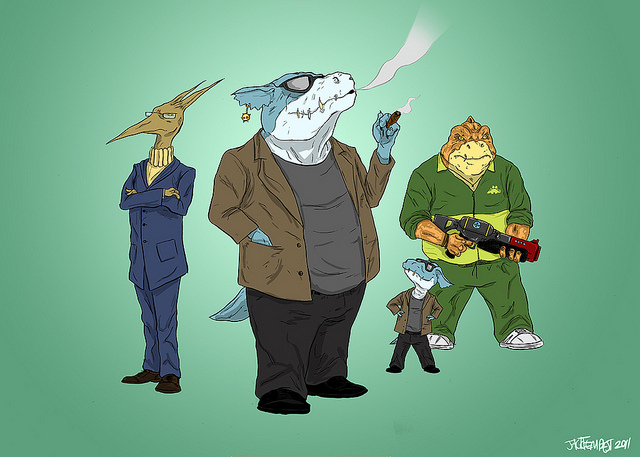 The internet used to be an anonymous place. We could coast and comment for hours, never revealing ourselves. Social Media changed that. It turned the web into public space. We are now required to self monitor the same way we would in a restaurant or a board meeting. Many websites require us to sign in to comment, and posts are linked to our Facebook or Twitter profiles.
The internet used to be an anonymous place. We could coast and comment for hours, never revealing ourselves. Social Media changed that. It turned the web into public space. We are now required to self monitor the same way we would in a restaurant or a board meeting. Many websites require us to sign in to comment, and posts are linked to our Facebook or Twitter profiles.
As a result there’s been a huge shift in mentality, and it’s hard to digest. No wonder professionals are hesitant to move forward with it, and start doing business in the online community.
When I started reading about SOPA/PIPA, I was shocked. The US government has been trying to stop entertainment piracy (music, movies, etc) for years, but Wikipedia? This is not entertainment. Many people use it to function. The idea that this regulation could affect such useful open-source software blew my mind. It had, after all, helped me through my journalism degree.
I don’t know if things have changed much in the last five years, but when I was in high school, those were the dreaded words. My teachers were aggressive in their warnings; those who cited Wikipedia on academic papers would be reprimanded. They were grounded in the notion that it was unreliable, and could not be taken seriously.
I remember the first time I used Wikipedia. I was hooked. A grad school student referred me to it and it was like he had given me a gift; a gift that would help me breeze through high school and continue as one of my vices in university.
It enraged me that my high school teachers preferred that we dig through the library. I remember spending hours tracking down the right title; to find an old, dusty, worn in reference book from 1986. Of course, we were allowed to use the internet, as long as we were citing “credited” sources.
Sue Gardner is the executive director of the Wikimedia foundation. She’s also an avid public speaker. In 2009 she hosted the most prestigious journalism lecture of the year at St. Thomas University, and spoke to students about the controversies of an open-source world.
It was amazing to see a community of people who believed in, and were compelled by her words and the power of the free-information world we’re living in.
A YouTube video posted in December 2011, gives insight to the challenges Gardner faces in her work with the non-profit.
Gardner says that no one believed in an amateur, collaborative encyclopaedia in the beginning, and people were surprised when it worked. Wikipedia has hundreds of thousands of volunteer editors, many of them experts in their trade. But can we trust it?
“That’s a conversation that we’re all having – the whole world is having with itself right now. Sometimes we find that blogs are more authoritative than one might imagine and sometimes they’re less authoritative. There’s no easy answer anymore for what authority is, where credibility resides – all of that,” Gardner said.
Having worked for the CBC, Gardner encountered many debates regarding the legitimacy of Wikipedia articles. But she’s seen a growth in credibility over time and a rise in followers as a result.
“Part of what I’ve seen happening there is an increased critical stance, that I think people are taking towards traditional media and traditional sources of authority.”
When Gardner is pointed to the idea that Wikipedia is sometimes wrong, she challenges it by saying, “Sometimes the New York Times is wrong. Sometimes the BBC is wrong.” She has a point.
Journalists tend to rely on subject matter "experts" in their writing. Quoting doctors, politicians, government officials. It establishes the trust of the reader. But when we think about it, people are people. They make mistakes. When we have this collaborative, social effort in creating one of the world's most prominent knowledge sources, it's incredible. And how do we know that the approved editors aren't doctors, scientists, or particular "experts"?
Thinking of Wikipedia as social changes the dynamic of learning. But it's incredibly social; it wouldn't exist without the hard work and cooperation of strangers across the globe. People link to it every day, through their blogs and other media channels.
I’ve been scraping the UNB libraries to find relevant articles on Wikipedia in the education system. It was difficult to find anything that had been written in the last 5 years, let alone available online.
I found a study conducted by Nick Schweitzer, PhD, of the University of Arizona in 2008. He surveyed just below 1000 first year psychology students, and a focus group of 76 advanced level students. He wanted to know how many students were using and citing Wikipedia. His findings were not surprising.
80 per cent of upper year college students had referred to Wikipedia for an academic paper. Significantly fewer admitted citing Wikipedia, which suggests most students use the encyclopaedia for background information or simply do not cite their papers. Schweitzer writes:
“There is an important point to be made here: Because our students will most likely be using Wikipedia in some way during their college careers, it would behoove teachers of psychology (or any discipline, for that matter) to become familiar with Wikipedia and see firsthand the vast array of articles on the concepts, history, and individuals in our field. In fact, I would not be surprised if some readers of this article found themselves mentioned on Wikipedia.”
Social media is a broad term. It can be overwhelming. It’s not just about Twitter, Facebook or other social networking sites. It’s more than that. It’s about the way information circulates, the way we share things; the way we are social in modern life. If the SOPA/PIPA regulations pass, it will feel as though we've turned back the clock several decades. We'll lose all of this.
You may have read that and nodded, but you probably still have a lot of questions. Social media education is new wave, but it’s a rising and important trend as we adjust to our shifting social culture.
Our social forms of education flip traditional values and change the roles of authority figures. It's scary and unfamiliar. But this way of life is here to stay. Dialogue between the wealthy, powerful figures of society and the "average Joe" is less linear. The Joe's are talking. But your voice matters. Are you an expert in your trade? Who could better describe your work than you? Let us know in the comments below.
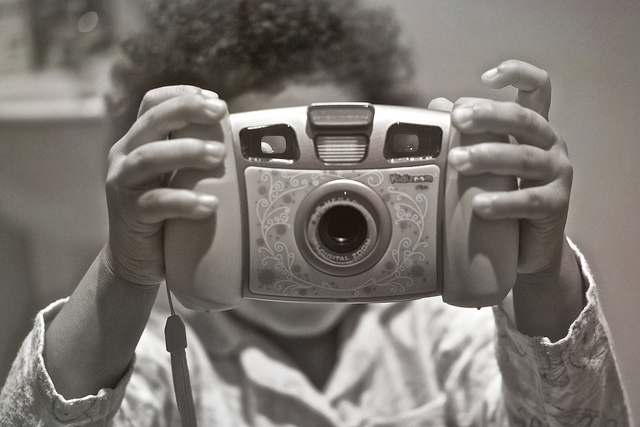 Jeff Roach said something to me recently that stuck. In his experience, it’s easier to spot a fake online than in real life. I think he’s on to something.
Jeff Roach said something to me recently that stuck. In his experience, it’s easier to spot a fake online than in real life. I think he’s on to something.
Think about getting ready for an interview. Essentially, you can be whoever you want to be. We’re given an empty canvas to paint ourselves however we see fit. When it comes to landing a job, first impressions are everything. The way we dress, speak and use body language all converge; working in our favour or against us.
But you already knew that.
We’ve had our whole lives to test social reactions in real life. It’s in our nature to appear a certain way to please those around us.
Let me give you an example. Some people are actors from birth, whether they want to be or not. Imagine a man who lived his whole life as a heterosexual male, married with kids. Then, one day in his fifties he comes to work dressed as a woman. It shocks the hell out of everyone around him, and it should. But it happens.
Social media is still so new in our lives; we don’t have the experience or the “tried and true” tactics to rely on. It’s all an exercise in experimentation. It will be a while before online behaviour has been studied in a way that’s useful and significant. We don't know enough about it.
But one thing is certain: how we act on social channels will inevitably affect us.
Diane Cole is one of the most driven people I’ve ever met. She’s also one of the few twenty-somethings I’ve encountered who takes social media seriously. Having worked as a journalist at Here magazine and now as a producer at Accessible Media, she knows that being a professional applies online as much as offline.
“Everyone is their own brand now as a result of social media. You have to maintain your brand in order to get anywhere now. You have to keep up with trends and new or popular platforms and learn how to manipulate those in new, fresh ways in order to get noticed.”
When you think of online profiles as "personal resumes" it's kind of scary. Interactions online feel very informal, so self-monitoring is essential. We have to think seriously about how we market ourselves, keeping in mind that authenticity is everything. People don't connect to a brand. People connect to people.
Bain & Company is a world leading business consulting firm. They also believe in social media. The company studied over 3,000 consumers to establish what makes social media effective in the industry.
"We found that customers who engage with companies over social media spend 20 percent to 40 percent more money with those companies than other customers. They also demonstrate a deeper emotional commitment to the companies..."
We want to help your business grow a community around your brand. Social media is the avenue for building these relationships. It's the fastest way to engage customers, and more importantly, it's on their terms. Learn to inbound market and let people come to you.
Sociallogical is founded in helping business professionals find a voice in their community. We don't believe in speaking on behalf of our clients. Who better represents you than you?
We exist in an era where an online presence is integral. It's become a pre-requisite; basic, elemental, expected.
But jumping onto social media platforms without a roadmap would leave anyone feeling overwhelmed. Dialogue on social channels consists of a lot of noise. The challenge is in understanding how to tap into the right conversations. We have the tools and the expertise to show you how. Let's talk.